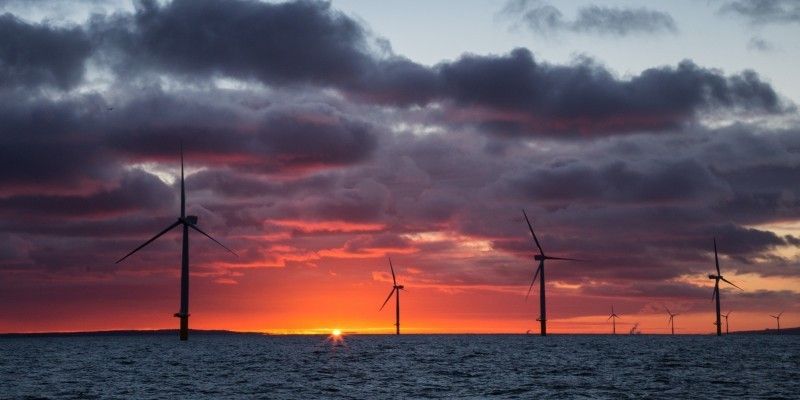

By Kieran Cooke
A building boom is underway offshore in Europe. Up to 400 giant wind turbines are due to be built off the northeast coast of the UK in what will be the world’s largest offshore wind development.
Output from the Dogger Bank project will be 1.2 Gigawatts—enough to power more than 1 million homes.

Next year, a 150-turbine wind farm off the coast of the Netherlands is due to start operating and other schemes along the Dutch coast are in the works.
Denmark, Sweden and Portugal are major investors in offshore wind and China has ambitious plans for the sector.
Wind farms—both onshore and offshore—are seen as a key ingredient in renewable energy policy and an important element in the battle against climate change.
Fossil Fuel Prices
WindEurope, an offshore wind industry group, says that at the present rate of installations it’s likely Europe will be producing about 7 percent of its electricity from offshore wind by 2030.
By some calculations, all this building work would seem to make little economic sense. Fossil fuel prices are low on the world market and constructing offshore wind farms several kilometers out at sea, in often treacherous conditions, has traditionally been an expensive business.
Despite this, the offshore wind industry insists it has a bright future: costs are coming down and supporters say the sector is becoming ever more competitive.
Ironically, the slump in the price of oil has been one factor driving down the price of offshore power.
Inactivity in the oil industry and the closure of many drilling projects in the North Sea and elsewhere has led to a big surplus of offshore installation vessels. As a result, costs for transporting turbines out to sea and other support work have dropped substantially.
Costs have also dropped due to lower prices on the world market for steel, a major building component in offshore installations.
Building and technical techniques have been refined and standardized over the years. Maintenance expenditure—which can account for up to 40 percent of the running cost of an offshore installation—has been reduced. The industry now uses larger 6MW turbines, which it says need less servicing and in future it’s likely a move will be made to 8MW models.
New methods have been adopted for laying foundations for pylons at sea. The industry says that as projects have grown in size, economies of scale have been achieved.
The cost of cables connecting the wind pylons to power networks onshore has also been reduced. Initially, cables were produced to operate at full capacity at all times, but new cables that are less bulky and less expensive are able to cope with the intermittent power produced.
Earlier this month, DONG Energy of Denmark, the world’s largest offshore wind company, won a bid to build two wind farms 22 kilometers off the Dutch coast.
The company says power will be produced for less than any other offshore scheme to date. It is estimated that when the scheme is fully operational, electricity will cost €72.70 per megawatt hour (MWh) and €87 MWh when transmission costs are included.
At present, the cheapest offshore power is €103 MWh, generated by a wind farm off the coast of Denmark.
Costs Falling Rapidly
“It has been clear for some time that the costs of offshore wind are falling rapidly,” said Giles Dickson, head of WindEurope.
“This tender goes beyond even the most optimistic expectations in the market. The €87/MWh is significantly lower than anything we’ve previously seen. It now puts offshore wind in the same cost range as conventional power generation,” added Dickson.
The offshore industry does face problems. The majority of big projects in Europe—the main area of offshore wind activity—are backed by considerable government support. Not only do governments put considerable funds into offshore schemes, they also offer developers prices for power that are often well above wholesale market rates.
Political change might result in reductions in state support levels. For example, the UK’s vote to leave the European Union has led to considerable uncertainty about government policy on wind and other renewable energy schemes.
Offshore wind faces competition not just from fossil fuel power production but also from other renewables particularly solar power, which has seen dramatic cost reductions in recent years.
Although there is also competition from onshore power generation, which is considerably cheaper than offshore wind, many countries favor the offshore option because of its lower visual impact.
This article was reposted with permission from our media associate Climate News Network.

 233k
233k  41k
41k  Subscribe
Subscribe 